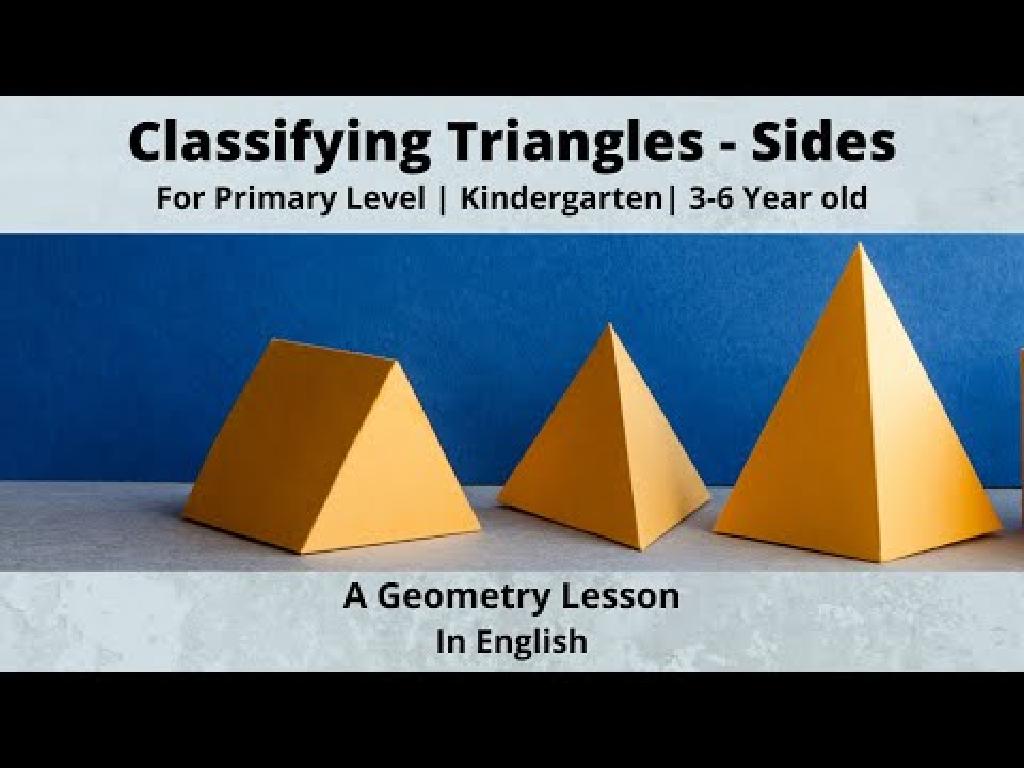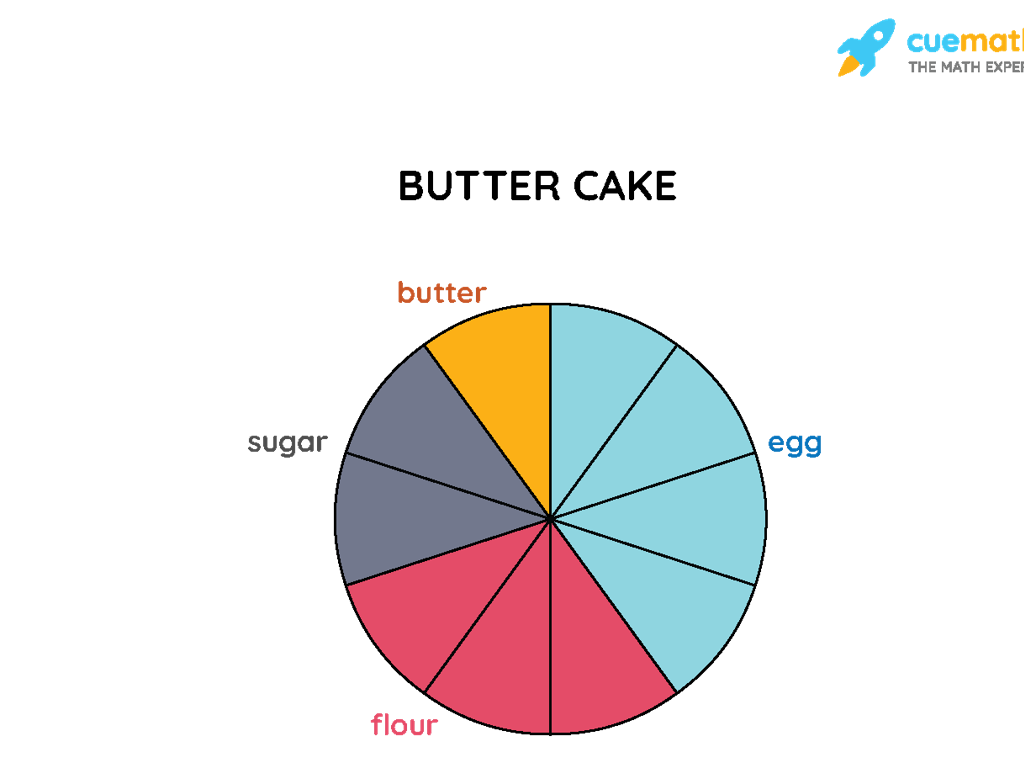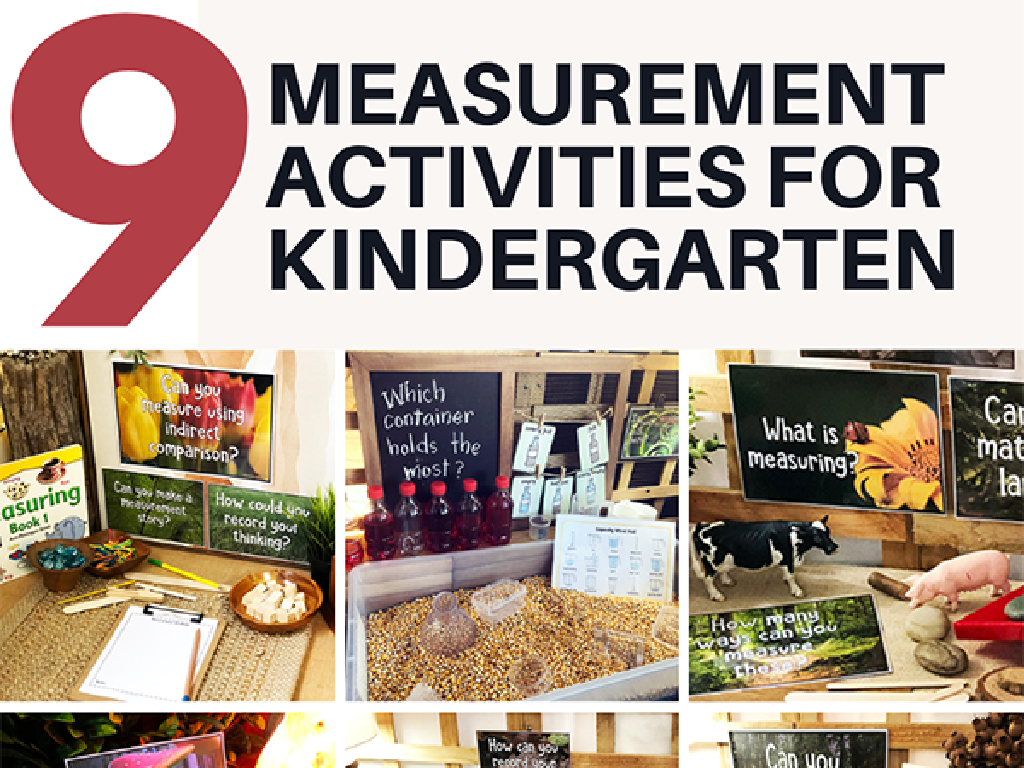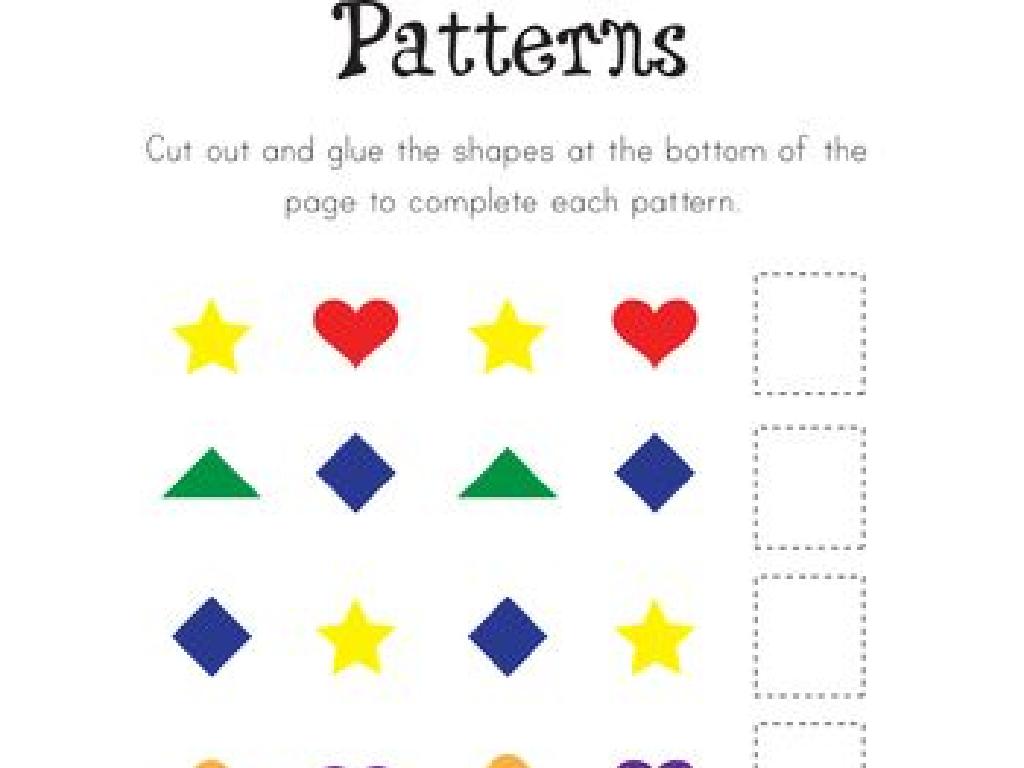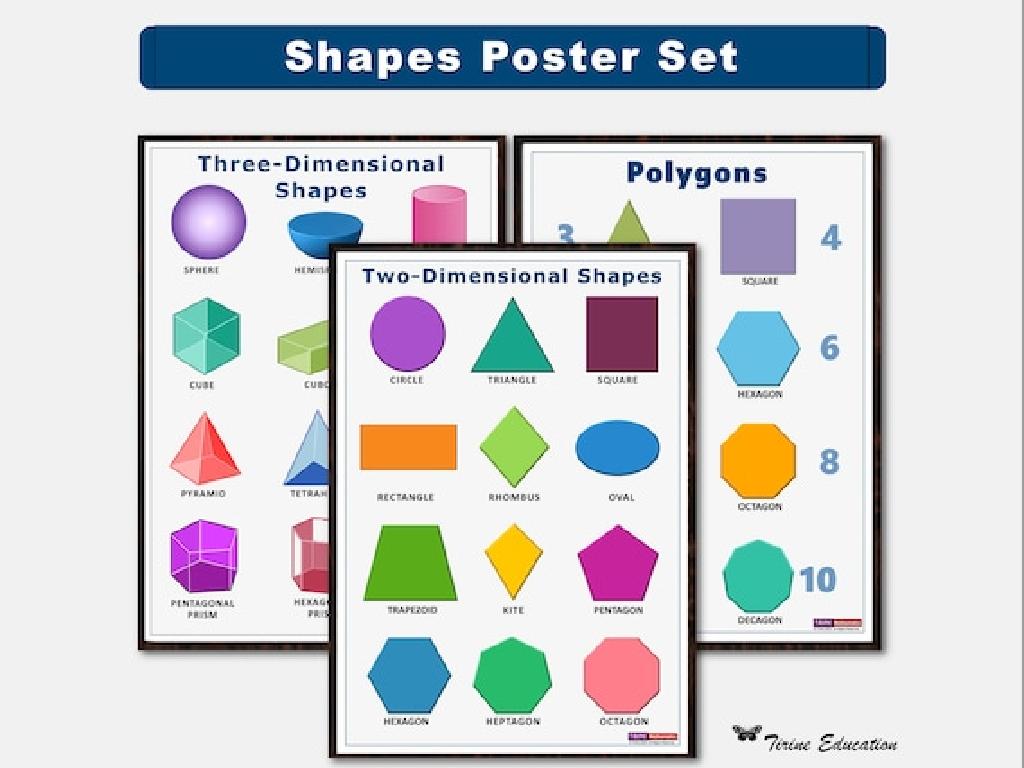Unit Prices
Subject: Math
Grade: Fifth grade
Topic: Money
Please LOG IN to download the presentation. Access is available to registered users only.
View More Content
Introduction to Unit Prices
– Understanding money in shopping
– Defining Unit Price
– Price per single unit of an item
– The importance of Unit Price
– Helps compare costs of different-sized items
– Calculating Unit Price
– Divide the total price by the number of units
|
This slide introduces the concept of unit prices within the broader context of money and shopping, which are practical and relevant topics for fifth graders. Begin by discussing the role of money in everyday shopping and how we often buy items in different quantities. Introduce the term ‘Unit Price’ as the cost for one unit of an item, which allows us to compare prices fairly, regardless of package size. Emphasize the importance of unit price in making smart shopping decisions, helping us to find the best deals and save money. Conclude by showing how to calculate the unit price by dividing the total cost of an item by the number of units it contains. Provide examples with common grocery items, such as comparing the cost of a single apple versus a bag of apples.
Calculating Unit Prices
– What is Unit Price?
– Calculate: Total Cost / Quantity
– Divide the total cost by the number of items to find the price per item.
– Examples: Grocery items
– Milk: $3 for 1 gallon, Bread: $2.50 for 2 loaves
– Practice: 12-pack soda cost
– If a 12-pack of soda is $4.50, what’s the price per can?
|
Unit price helps us compare costs of items regardless of quantity or size, ensuring we get the best deal. Start by explaining the concept of unit price as the cost per single unit of an item. Demonstrate with grocery items, as they are relatable to students. For the practice problem, guide students through the calculation: $4.50 divided by 12 cans equals the unit price per can. Encourage students to bring examples from home or the store for real-world application. This exercise will enhance their understanding of value for money and improve their division skills.
Comparing Unit Prices: Finding the Best Deal
– Understanding unit price
– Comparing prices of products
– Look at price per unit, not total cost
– Example: Paper towel brands
– Brand A: $5 for 10 rolls, Brand B: $3 for 4 rolls
– Class Activity: Best Buy Challenge
– Use real examples to determine the most cost-effective option
|
This slide introduces the concept of unit price and how it can be used to determine the best deal among similar products. Start by explaining that unit price is the cost per single unit of an item, which allows for fair comparison regardless of package size. Use the example of paper towels to illustrate how to calculate and compare unit prices of different brands. For the class activity, present students with various product choices and ask them to calculate the unit price to decide which is the better buy. Provide them with a worksheet that includes several examples of products with different prices and quantities. Encourage group discussion to allow students to explain their reasoning. This activity will help them apply math skills to real-world shopping decisions.
Real-Life Application of Unit Prices
– Unit Prices in daily shopping
– Compare prices of different sizes to save money.
– Budgeting with Unit Prices
– Use unit prices to track spending and stay on budget.
– Group Activity: Party Planning
– Find the best value for party supplies within a set budget.
|
This slide aims to teach students the practical use of unit prices in everyday life. Start by explaining how unit prices can help compare the cost of products regardless of their packaging size, which is a valuable skill for saving money during shopping. Then, discuss how knowing unit prices can assist in creating and sticking to a budget, as students can better estimate the total cost of their purchases. For the group activity, students will be given a hypothetical budget for planning a party. They will use unit prices to determine the most cost-effective options for party supplies, fostering teamwork and applying math skills in a fun, real-world scenario. Provide examples of items they might buy for a party and guide them on how to calculate unit prices. Encourage creativity and critical thinking as they work within their budget.
Unit Price Game: Estimate & Calculate!
– Interactive game: Guess the Unit Price!
– Estimate item unit prices first
– Use your intuition to guess the cost per item
– Calculate to check your estimates
– After guessing, use division to find the actual unit price
– Rewards for best estimators and calculators
– Prizes for closest guesses and accurate math skills
|
This interactive game is designed to make learning about unit prices fun and engaging for fifth graders. Begin by explaining what a unit price is: the cost per single item or measure, which helps us compare different products and sizes. Students will first use their intuition to estimate the unit price of various items, then they’ll perform calculations to find the actual unit prices. Encourage them to think about the size and cost of items as they make their guesses. Afterward, they’ll use division to determine the precise unit price. Offer rewards for students who make the closest estimates and for those who calculate correctly, to motivate participation and accuracy. This activity will help students understand the practical importance of unit prices in everyday shopping and enhance their division skills.
Class Activity: Unit Price Scavenger Hunt
– Pair up for a price hunt
– Find items with best unit prices
– Use ads and mock-up shelves
– Look at price tags, calculate cost per unit
– Share and discuss findings
|
This interactive activity is designed to help students understand the concept of unit pricing in a fun and engaging way. Set up the classroom with various advertisements, catalogs, or mock-up shelves that display items with different prices and quantities. Students will work in pairs to search for items and determine which ones offer the best value based on their unit prices. After the hunt, each pair will share their findings with the class, and a discussion will follow to compare results and reinforce the concept of unit pricing. For the teacher: Prepare diverse items with clear price and quantity information. Guide students on how to calculate unit prices by dividing the total price by the quantity. Have a worksheet ready for students to record their findings. Consider having different items for each pair to ensure a variety of examples for the discussion.
Unit Prices: Conclusion and Review
– Recap: What are Unit Prices?
– How to calculate Unit Prices
Divide the total price by the number of units to find the price per unit.
– Comparing different Unit Prices
Use the unit price to determine which product offers the best value for money.
– Q&A session for clarity
Prepare questions about unit prices to ask and discuss.
|
This slide aims to summarize the lesson on unit prices. Begin by recapping the definition of unit prices and their significance in making informed purchasing decisions. Review the steps to calculate unit prices by dividing the total cost by the quantity, and emphasize the practicality of comparing unit prices while shopping to get the best deals. Conclude the lesson with a Q&A session, encouraging students to ask questions about any aspect of unit prices they find confusing. This will help ensure that all students have a solid understanding of the concept before moving on to the next topic.
Homework: Exploring Unit Prices
– Complete the Unit Price worksheet
– Solve problems to find the cost per item or per unit of measure
– Compare Unit Prices on a shopping trip
– Look at different brands and sizes, see which is more cost-effective
– Note your observations
– Write down which items offer the best value for money
– Share your findings in class
|
This homework assignment is designed to give students practical experience with unit prices, an important concept in understanding money and making smart shopping decisions. The worksheet will provide structured practice, while comparing unit prices on a shopping trip will offer real-world application. Encourage students to take notes on their observations to facilitate a discussion in the next class. This will help them to articulate their thought process and the conclusions they reached about the best value purchases. Provide examples of how to calculate unit prices and what to look for during their shopping trip.

